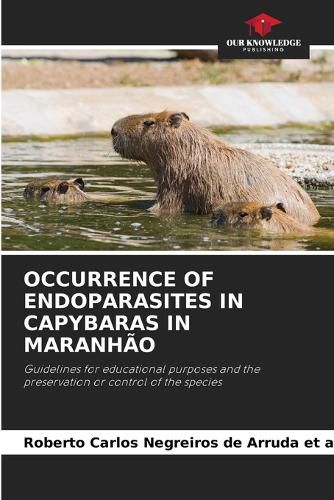Readings Newsletter
Become a Readings Member to make your shopping experience even easier.
Sign in or sign up for free!
You’re not far away from qualifying for FREE standard shipping within Australia
You’ve qualified for FREE standard shipping within Australia
The cart is loading…






The main focus of the book is to describe the behavioral characteristics, diseases and parasites of capybaras, as a way of understanding and preserving this wonderful animal. Capybaras are the largest rodents in the world and because of their natural habit of staying in bodies of water (dams, reservoirs, lakes, ponds, rivers and streams), they are named after the genus Hydrochoerus, which is a reference to a water pig. They come from the genealogy of other American rodents, such as the prey, moco, paca and agouti, among others from the Caviidae family. In Tupi-Guarani"kapibara" means "grass eater", these animals live in flooded areas or firm areas with water, in Brazil, only they don't inhabit the caatinga biome.
$9.00 standard shipping within Australia
FREE standard shipping within Australia for orders over $100.00
Express & International shipping calculated at checkout
The main focus of the book is to describe the behavioral characteristics, diseases and parasites of capybaras, as a way of understanding and preserving this wonderful animal. Capybaras are the largest rodents in the world and because of their natural habit of staying in bodies of water (dams, reservoirs, lakes, ponds, rivers and streams), they are named after the genus Hydrochoerus, which is a reference to a water pig. They come from the genealogy of other American rodents, such as the prey, moco, paca and agouti, among others from the Caviidae family. In Tupi-Guarani"kapibara" means "grass eater", these animals live in flooded areas or firm areas with water, in Brazil, only they don't inhabit the caatinga biome.